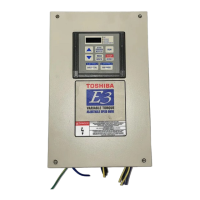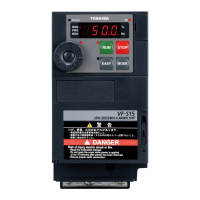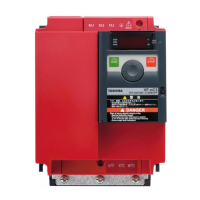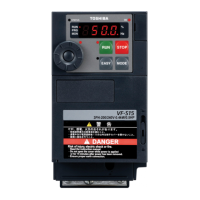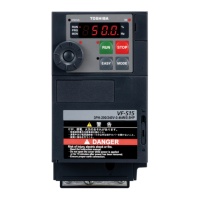G9 ASD Quick Start Guide 17
I/O and Control
The ASD can be controlled by several input types and combinations thereof, as well as operate within a
wide range of output frequency and voltage levels. This section discusses the ASD control methods and
supported I/O functions.
The Terminal Board supports discrete and analog I/O functions and is shown in Figure 9 on pg. 20.
Table 2 lists the names, descriptions, and default settings (of programmable terminals) of the input and
output terminals of the Terminal Board.
Note: To use the input lines of the Terminal Board to provide Run commands the
Command Mode setting must be set to Terminal Block.
Figure 20 on pg. 22 shows the basic connection diagram for the G9 ASD system.
Table 2. Terminal Board Default Assignment Terminal Names and Functions.
Term. Name Input/Output
Function (Default Setting If Programmable)
(Also See Terminal Descriptions on pg. 18)
Circuit Config.
ST
Discrete Input
Connect to CC
to activate
(Sink mode).
Standby — Multifunctional programmable discrete input. Activation required
for normal ASD operation (see Installation Notes on pg. 10 for further
information on this terminal).
Figure 10 on pg. 21.
RES
Reset — Multifunctional programmable discrete input. Resets the ASD.
F
Forward — Multifunctional programmable discrete input.
R
Reverse — Multifunctional programmable discrete input.
S1
Preset Speed 1 — Multifunctional programmable discrete input.
S2
Preset Speed 2 — Multifunctional programmable discrete input.
S3
Preset Speed 3 — Multifunctional programmable discrete input.
S4
Preset Speed 4 — Multifunctional programmable discrete input.
O1A/B (OUT1)
Switched
Output
Low Speed — Multifunctional programmable discrete output.
Figure 16 on pg. 21.
O2A/B (OUT2) Reach Frequency — Multifunctional programmable discrete output.
FLA Fault relay (N.O.).
Figure 19 on pg. 21.FLB Fault relay (N.C.).
FLC Fault relay (common).
RR
Analog Input
Frequency Mode 1 — Multifunction programmable analog input. (0.0 to 10
volt input — 0 Hz to Maximum Frequency).
Figure 11 on pg. 21.
RX Multifunctional programmable analog input (-10 to +10 VDC input).
Figure 12 on pg. 21.
V/I
(Select V or I
via SW301)
Unassigned — V — Multifunctional programmable isolated analog voltage
input (0 to 10 VDC input).
Figure 13 on pg. 21.
Frequency Mode 2 (default setting) — I — Multifunctional programmable
isolated analog current input (4 [0] to 20 mADC input — 0 Hz to Maximum
Frequency).
AM
Analog Output
Output Current — Current output that is proportional to the output current
of the ASD or to the magnitude of the function assigned to this terminal.
Figure 18 on pg. 21
FM
Output Frequency — Current
or Voltage output that is proportional to the
output frequency of the ASD or to the magnitude of the function assigned to
this terminal. Select Current or Voltage at F681.
SU+ DC Input Externally-supplied 24 VDC backup control power (1.1 A min.).
P24
DC Output
24 VDC (200 mA max.) output.
Figure 14 on pg. 21.
PP
10.0 VDC/10 mA voltage source for the external potentiometer.
Figure 15 on pg. 21.
FP Pulsed Output
Frequency Pulse — Multifunctional programmable output pulse train of a
frequency based on the output frequency of the ASD.
Figure 17 on pg. 21.
IICC
— Return for the V/I input terminal.
Do Not connect to
Earth Gnd or to each
other.
CCA
— Return for the RR, RX, P24, and the PP terminals.
CC
— Return for the AM, FM, SU+, and the discrete input terminals.
Phone: 800.894.0412 - Fax: 888.723.4773 - Web: www.ctiautomation.net - Email: info@ctiautomation.net

